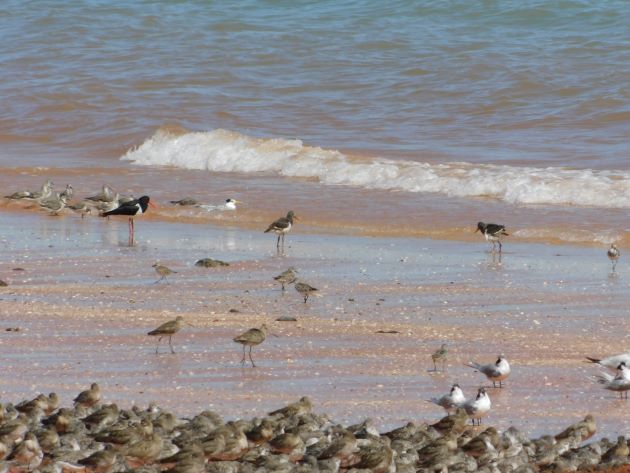
Roebuck Bay is a well-known location for bird-watching around Broome. It is especially renowned for the migratory shorebirds and they have been returning from the Northern hemisphere to our shores in recent weeks. The mudflats of Roebuck Bay are the feeding grounds for thousands of shorebirds and once the tide comes in they roost on the shore around the high tide mark. There has been a small flock of around forty to fifty Pied Oystercatchers in Roebuck Bay for the majority of the years that we have lived here since 1999. At the farthest point of Roebuck Bay to the south there is often a flock of Pied Oystercatchers that number several hundred birds. This large flock is generally the non-breeding birds and on one occasion we have observed a nest there, but we do not know the outcome of it.
In recent years there have been Pied Oystercatchers attempting to breed along the shores of Roebuck Bay. This was not something that was known to occur until recently and the Pied Oystercatchers appear to be having some luck this breeding season. The area is used as a hunting ground for large raptors including the White-bellied Sea-Eagle and Brahminy Kite. By coincidence the return of the migratory shorebirds is at the same time as the Pied Oystercatchers breed here. Two of the most popular beaches for shorebirds roosting have also been the nest sites for two pairs of Pied Oystercatchers this breeding season.
Our observations recently have shown that the adult Pied Oystercatchers are roosting amongst the shorebirds where possible and it may well protect the juvenile Pied Oystercatchers. One of the pairs of Pied Oystercatchers has two young that are a couple of weeks old now, but growing fast. As the tide drops the birds all move forward to bathe and feed and the Pied Oystercatcher family becomes more visible. The header photo above shows the two juvenile birds with one adult. The juvenile birds are still grey, so they blend in quite well with the other shorebirds on the beach.
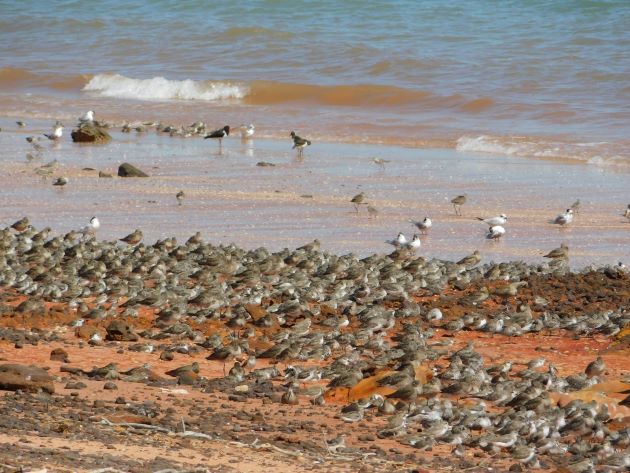
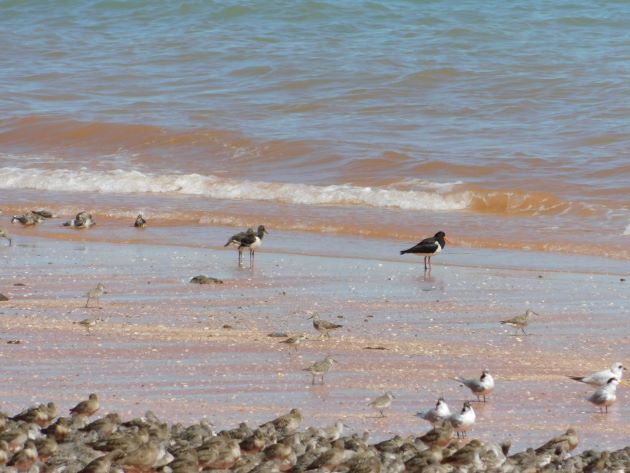
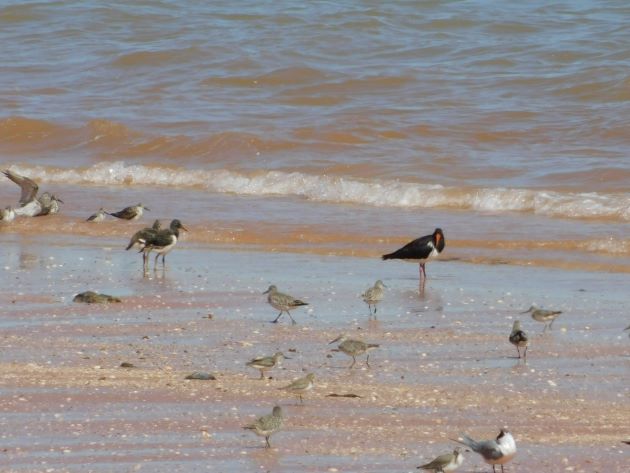
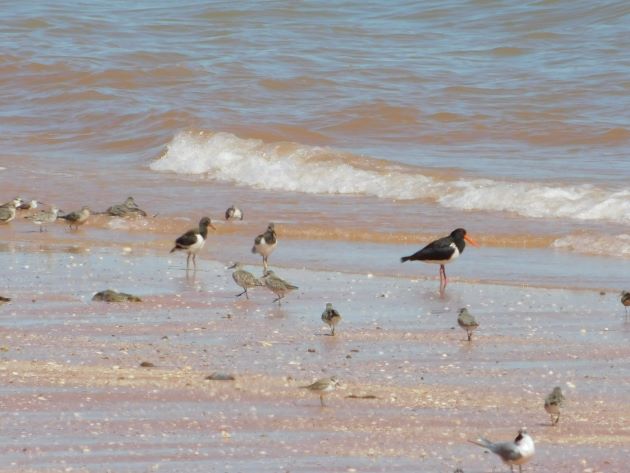
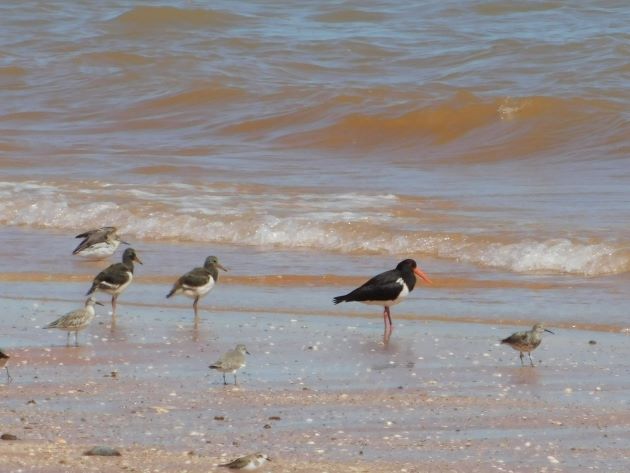
Pied Oystercatcher family with two chicks
When all of the shorebirds fly up due to a raptor flying by the Pied Oystercatchers are a lot more visible. Thankfully the shorebirds soon returned to the same beach and the Pied Oystercatcher family were a lot less obvious. It is not unusual for an adult Pied Oystercatcher to fly up and try and move a raptor on when they have young to care for.
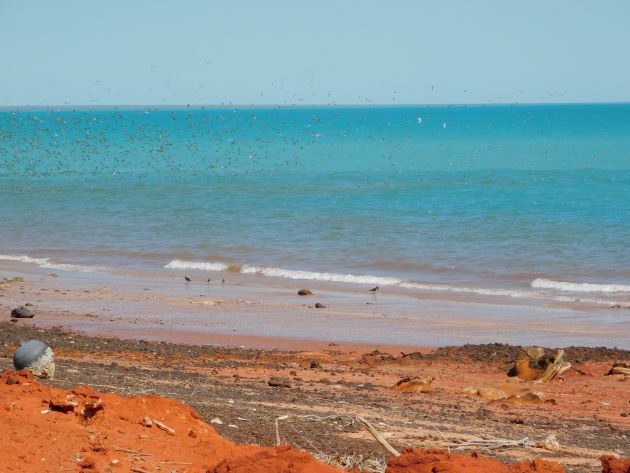
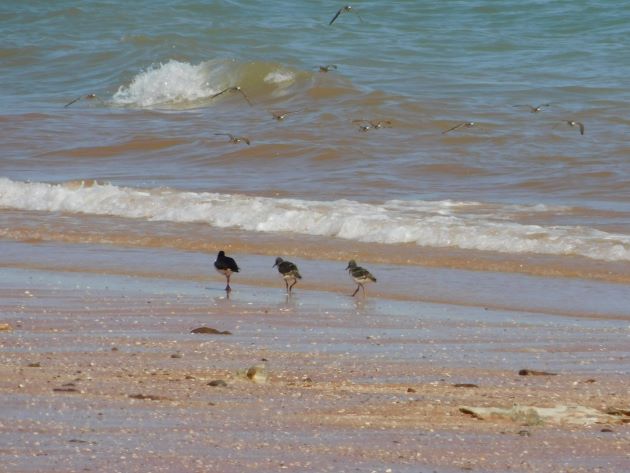
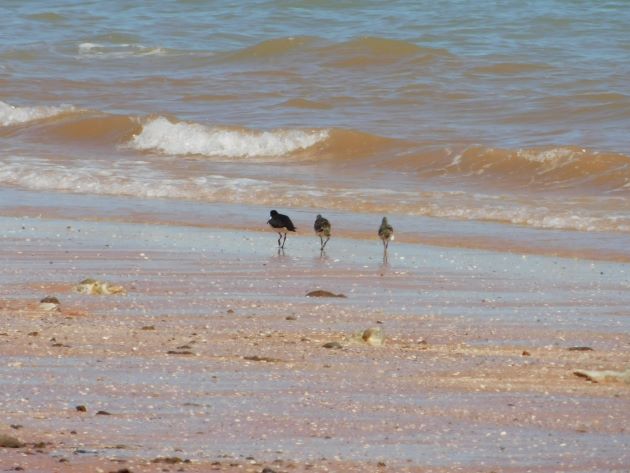
Pied Oystercatchers on the move
At another beach there was a family of Pied Oystercatchers amongst the shorebirds. On this beach there was only one juvenile, which had already started to get its adult black colouring. Although it almost looks like an adult Pied Oystercatcher it has one big disadvantage and that is that it can’t fly yet and won’t be able to for a couple more weeks. When all of the shorebirds lift off the Pied Oystercatcher stay on the beach and await their return, which is often only a minute or so.
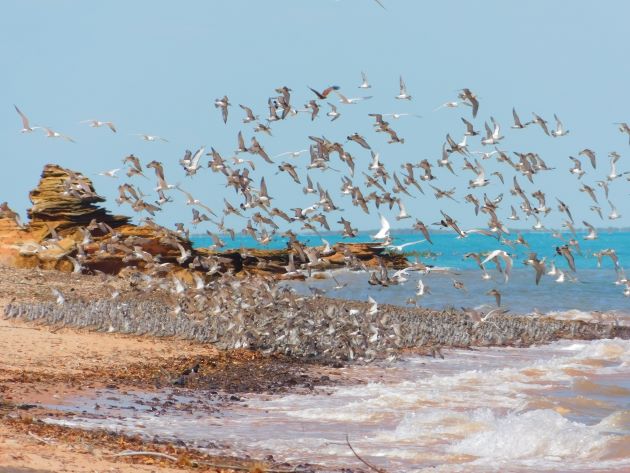
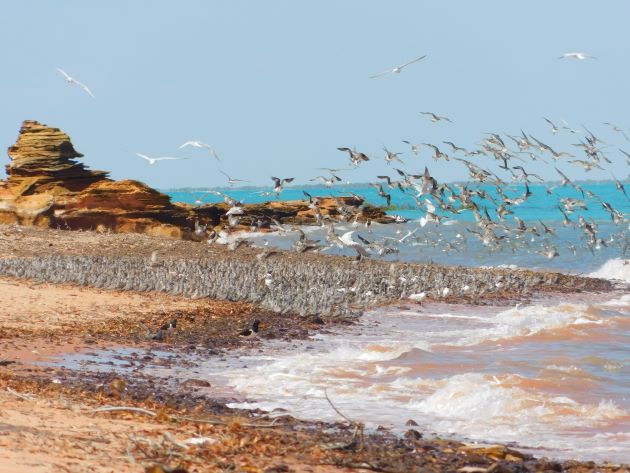
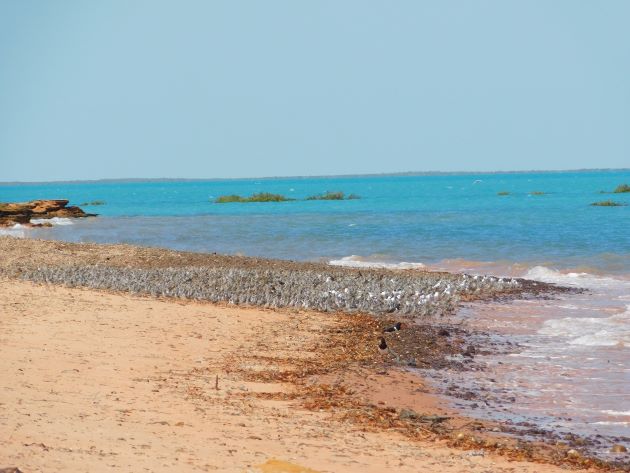
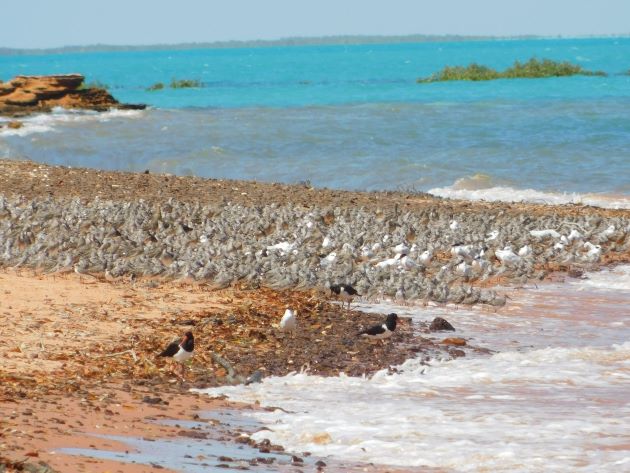
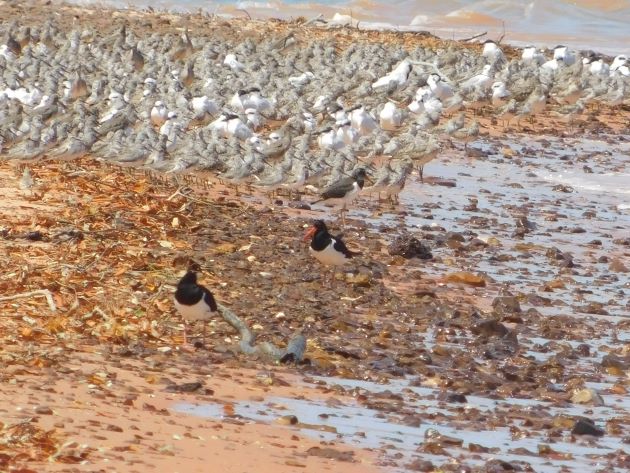
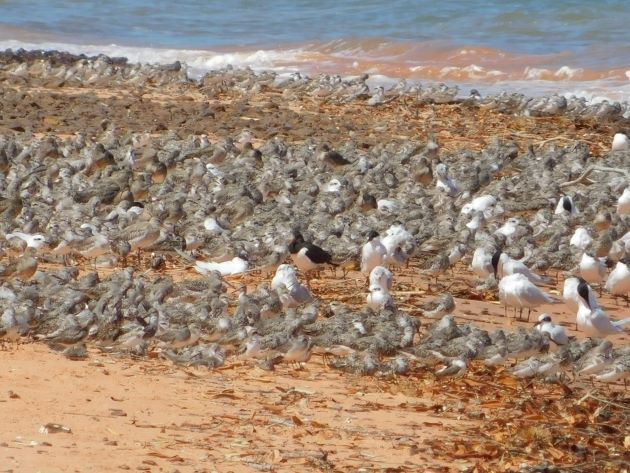
Pied Oystercatcher family amongst the migratory shorebirds and terns
Although the juvenile Pied Oystercatcher is starting to become black across its bib and wing feathers it still has some of the grey feathers on its head. It is almost the same size as its parents and although it has a red bill it remains dark at the tip. At this stage of development it is still relying on its parents for food and is learning how to feed.
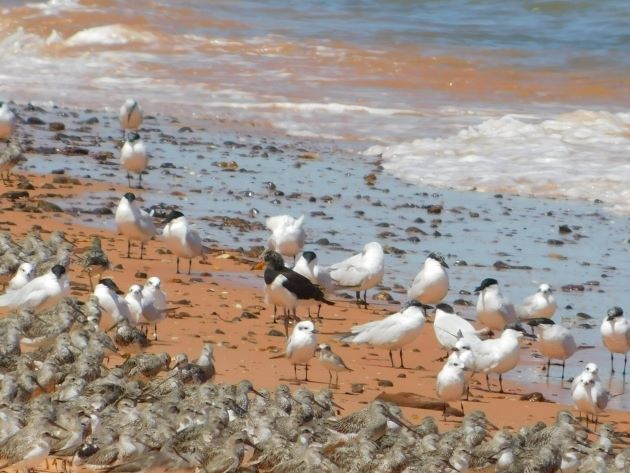
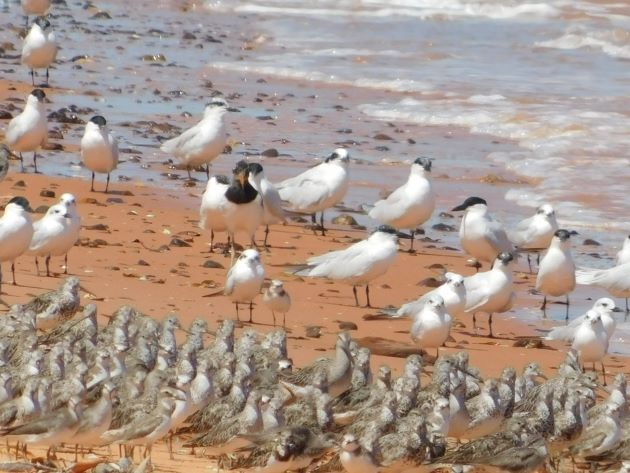
Juvenile Pied Oystercatcher amongst the migratory shorebirds and Gull-billed Terns
We are hopeful that this strategy of roosting amongst so many other birds may have advantages and help in the survival of the juvenile Pied Oystercatchers. It is always interesting to observe different Pied Oystercatcher breeding strategies on different beaches around our local area.
If you are wondering what species of migratory shorebirds are in these flocks at the moment they consist of Bar-tailed Godwit, Black-tailed Godwit, Asian Dowitcher, Great Knot, Red Knot, Common Greenshank, Grey-tailed Tattler, Terek Sandpiper, Greater Sand Plover, Lesser Sand Plover, Ruddy Turnstone, Grey Plover, Red-capped Plover, Red-necked Stint, Common Sandpiper, Eastern Curlew, Whimbrel, Curlew Sandpiper, Sharp-tailed Sandpiper and also a variety of terns! Many of the migratory shorebirds still have some of their breeding plumage.











Leave a Comment